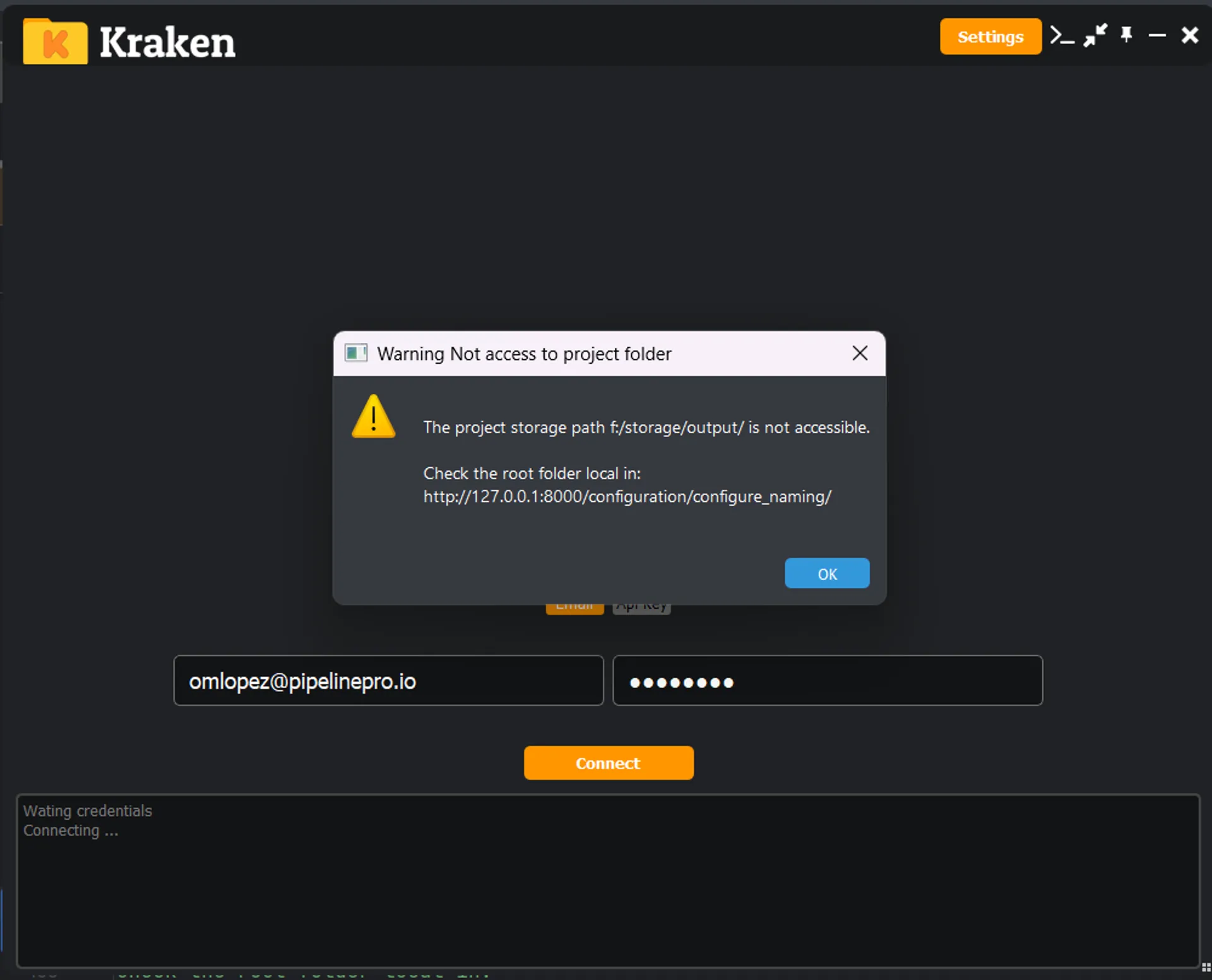System Updates
Major fixes and improvements have been applied to the BuildTrack and ingest workflow, especially concerning timeline frame range publication. The in/out values of the SHOT are now correctly published during ingest, ensuring accurate clip positioning in the timeline.
Clip import now links properly with track items and bins, and deleted episodes no longer appear in the selection menu. The default color interpretation for .mov files has also been adjusted to reflect proper project settings.
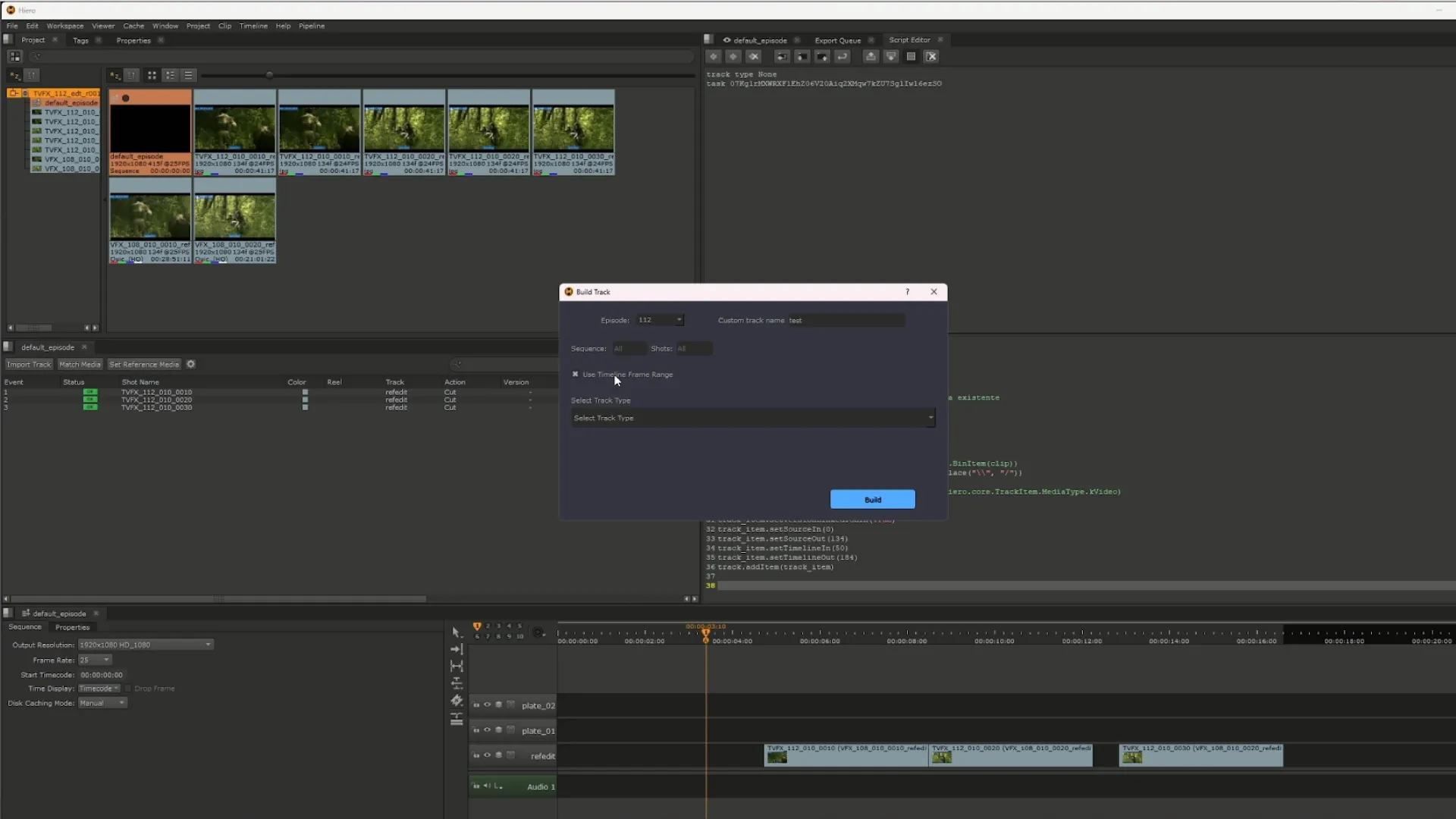
A new backend-level async trigger system is now in place to execute custom logic whenever key pipeline entities are created—such as episodes, sequences, scenes, shots, or tasks. This allows for automated actions like folder setup, structure initialization, or low-level sync with external systems.
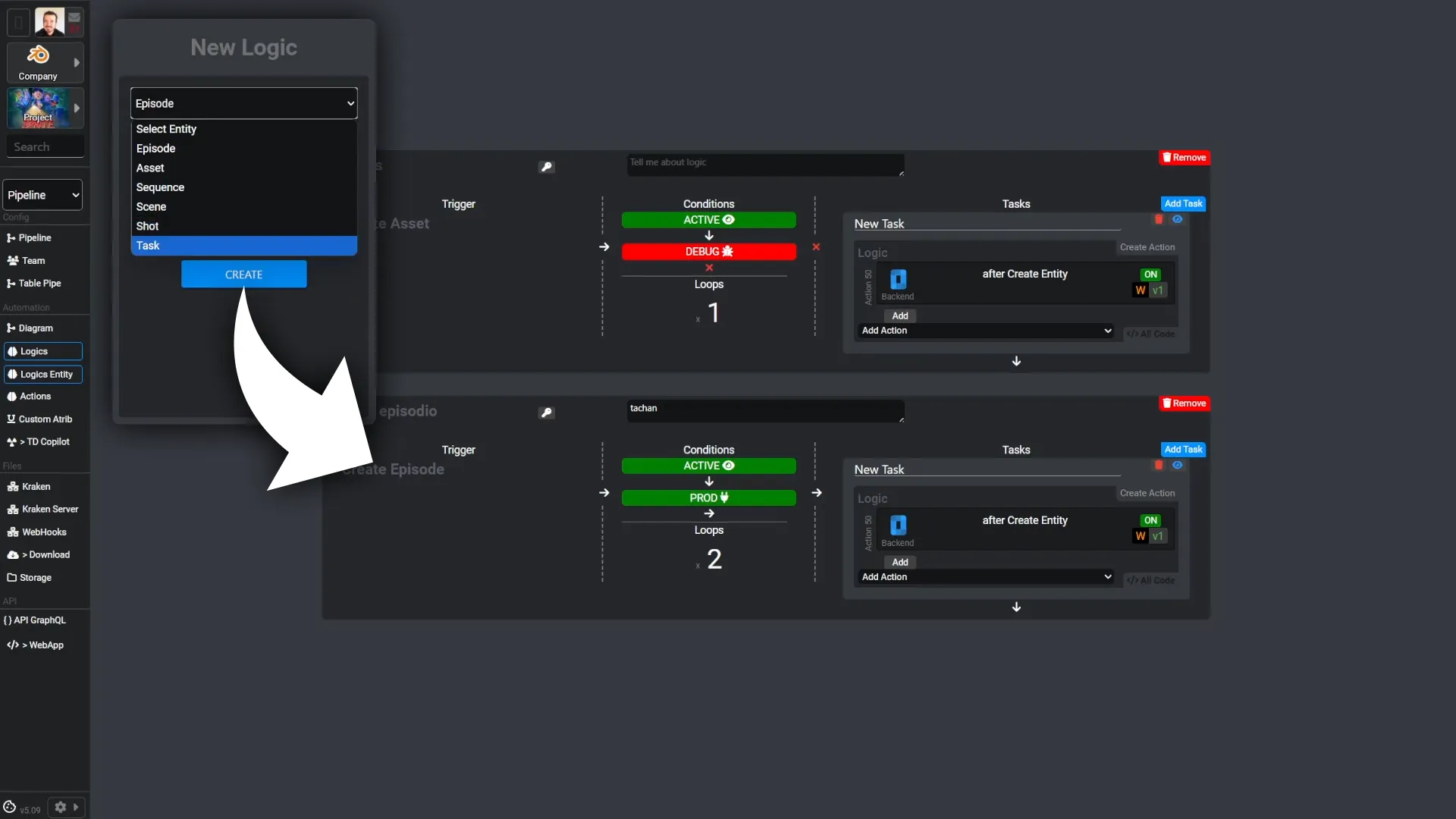
A new shortcut is now available in DCC menus to launch Kraken directly. When triggered, Kraken opens and takes the user to the appropriate context-based path.
This default behavior can be customized, allowing teams to define specific destination routes depending on the environment or task type.
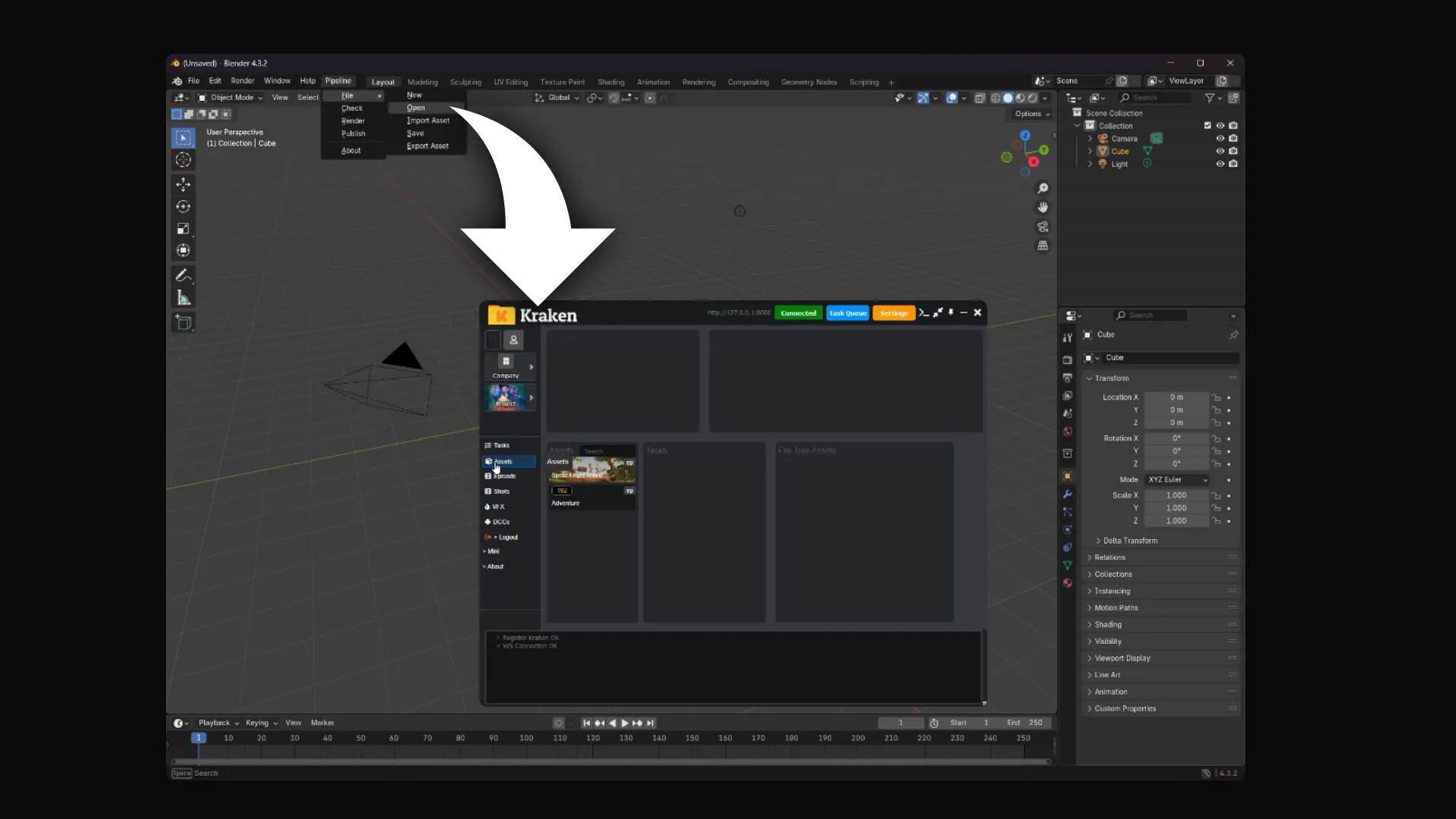
The centralized Publish tool is now fully integrated across the pipeline menu. When selected, it opens a modal that allows users to set the status to “published,” add comments, and log time spent on the task.
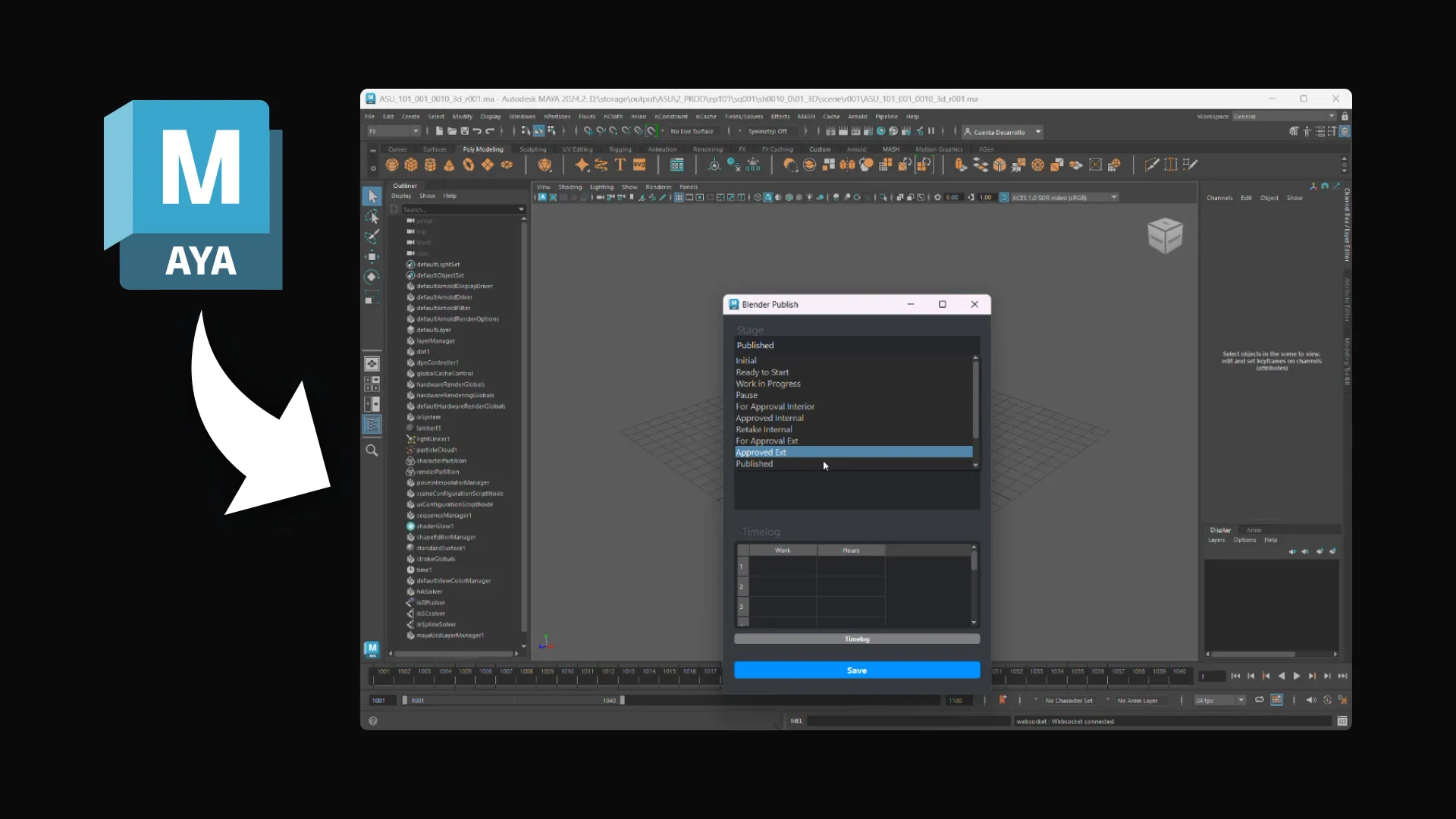
The new Publish tool is now available in Blender through the pipeline menu. When selected, it opens a modal that allows users to set the version status to “published,” add comments, and log time spent on the task.
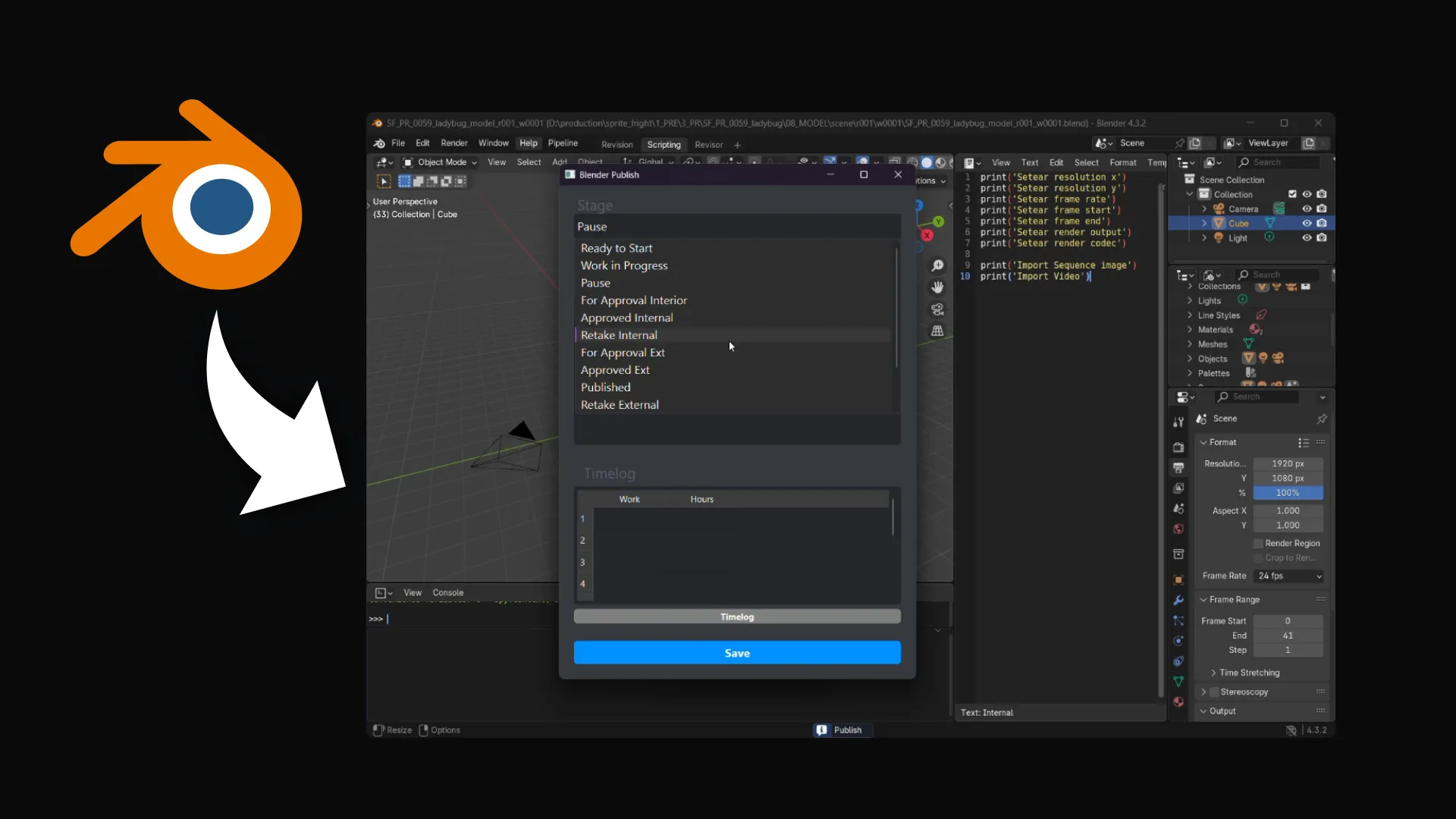
A new Publish tool is now available in Nuke, integrated into the pipeline menu. It allows users to publish the current scene by opening a modal where they can change the status to “published,” add comments, and log work time.
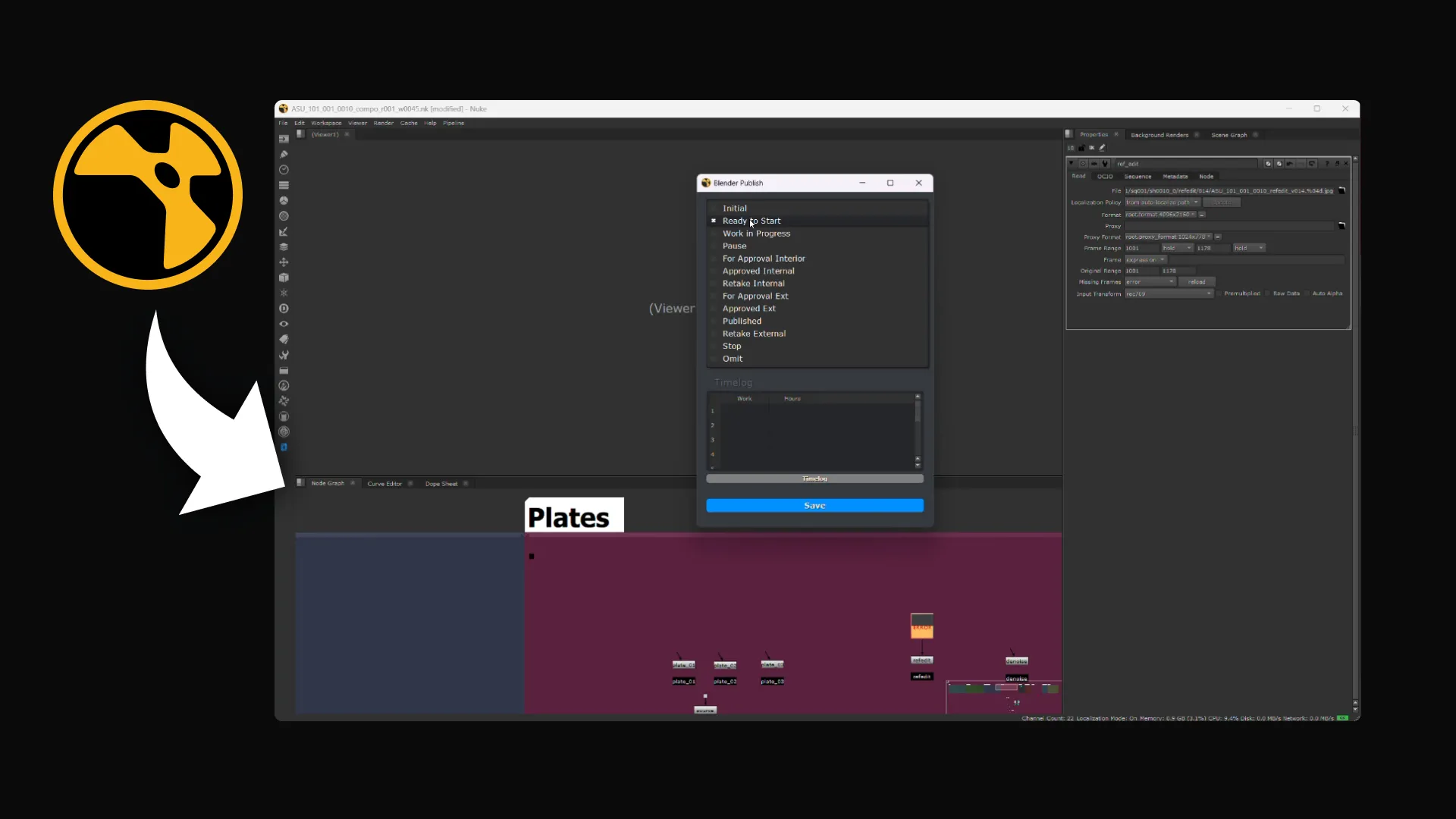
A new “Publish” button has been added to the pipeline panel, allowing users to finalize a version with just a few clicks. The modal lets you set the version to “published”, add a descriptive comment, and include a time log—for example, marking time spent on rendering.
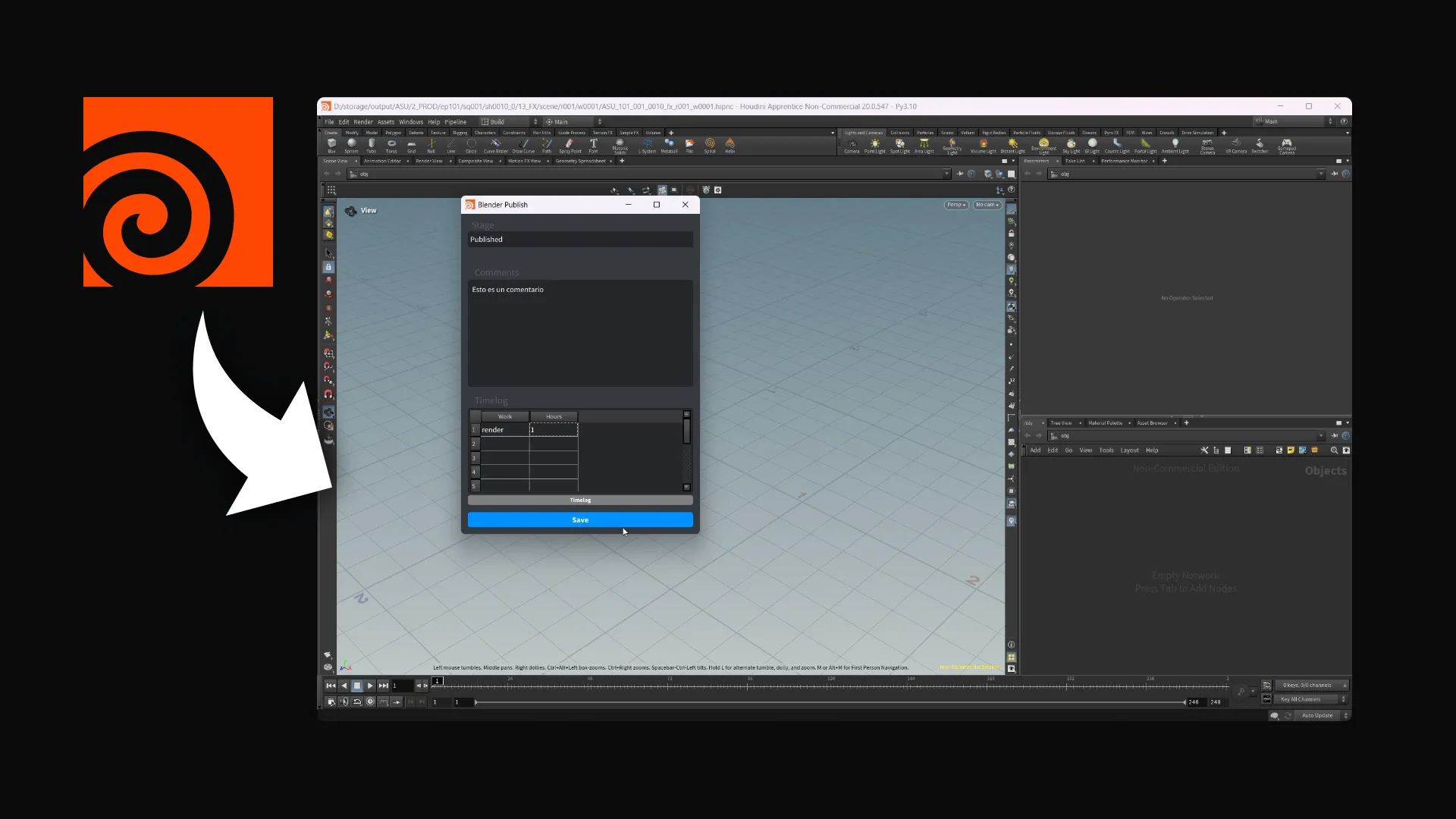
A dual-preview system is now active across all entities, supporting both image and video formats. Whether through import or manual upload, content is automatically converted to generate static and dynamic previews.
Any newly uploaded material replaces the existing preview, ensuring updated visibility while preserving access to previous versions.
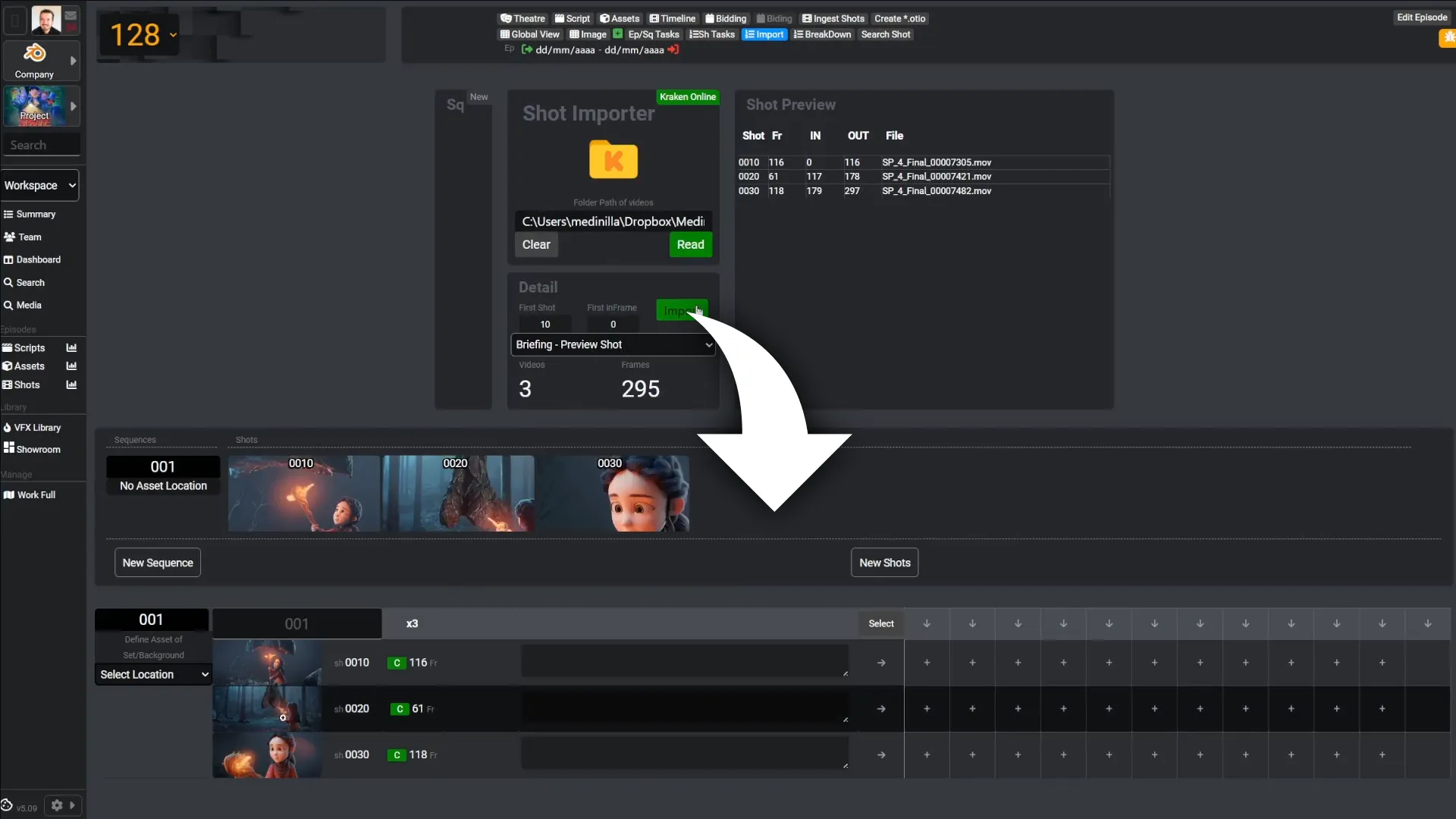
A new color management checker is now available in Nuke to ensure that the scene's active color settings match the officially published configuration from Hiero. The tool, named Check Nuke Color, compares each parameter and highlights any mismatches, showing both the current and expected values.
If a discrepancy is found, users can apply a fix directly through the interface, automatically updating the color settings in Nuke to match the published version. If no configuration has been published from Hiero, the checker passes by default.
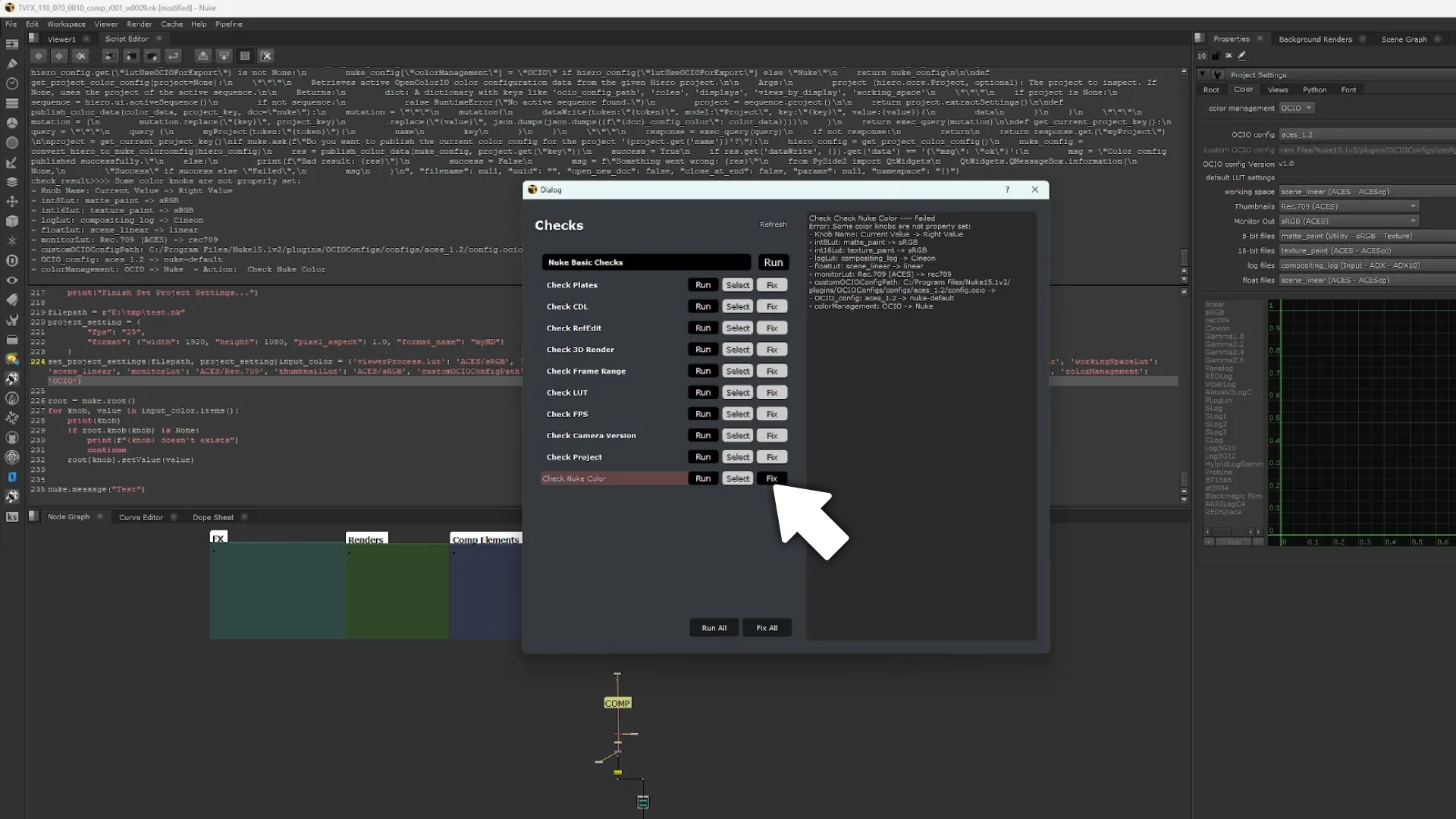
A new tool called "Publish Runner" has been introduced in Blender, allowing users to configure and execute multiple publishing actions sequentially from a single interface. This feature is particularly useful for automating validation steps, preparing deliverables, or running chained scripts.
The panel provides real-time feedback, showing which action is currently being executed. Optional time delays can be added to simulate processing time and better visualize execution flow during testing or review.
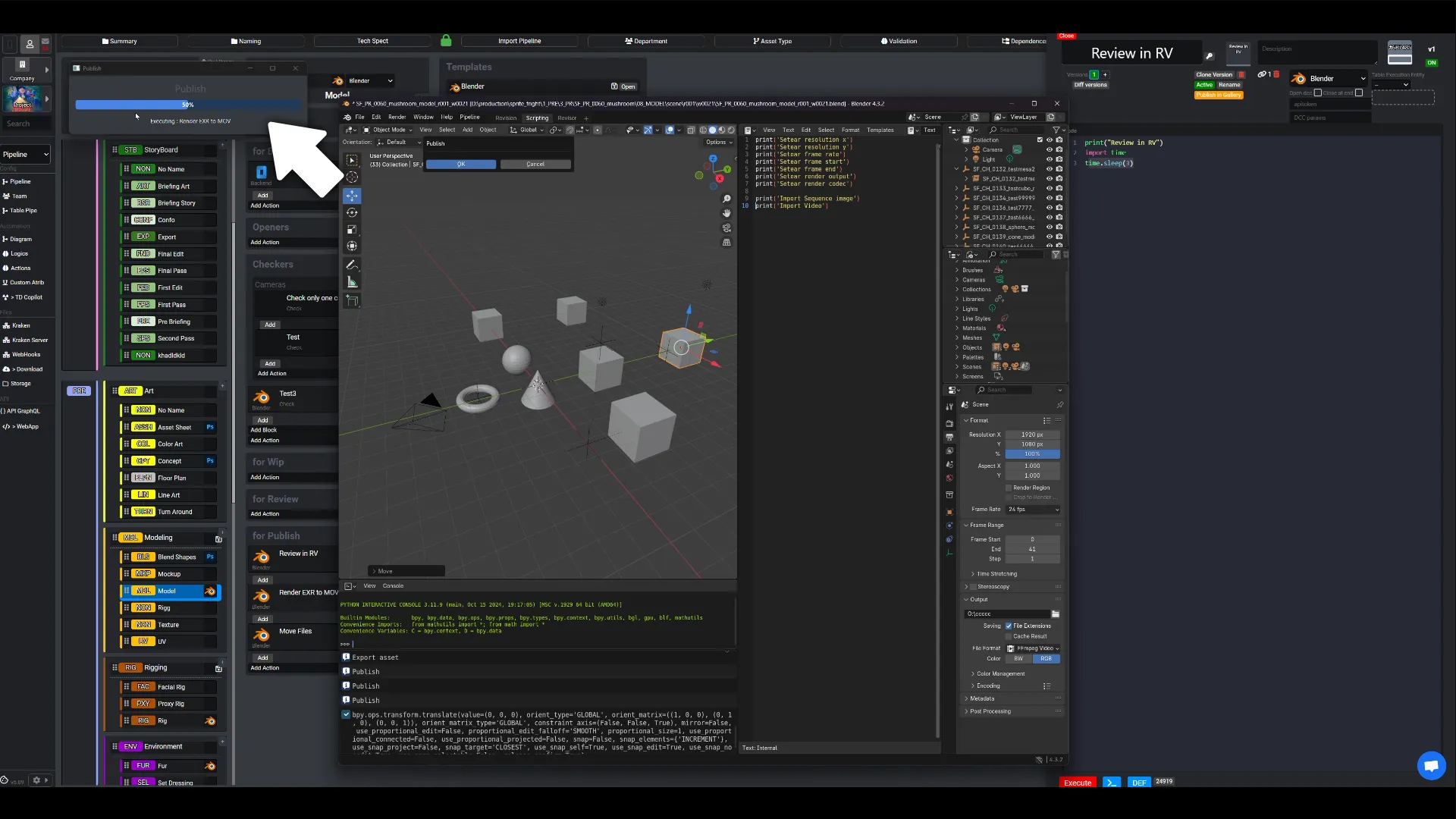
Openers are now fully functional in Blender tasks, allowing predefined actions to run automatically whenever a scene is opened. The system includes the RunChecks feature, which launches checkers in the background.
One of the integrated checkers is Check Sort From Range, designed to identify issues related to frame range ordering. When triggered, users can apply a fix directly from the interface. These checks currently run in a secondary thread, though due to Blender API limitations, execution may be moved to the main thread if stability issues arise.
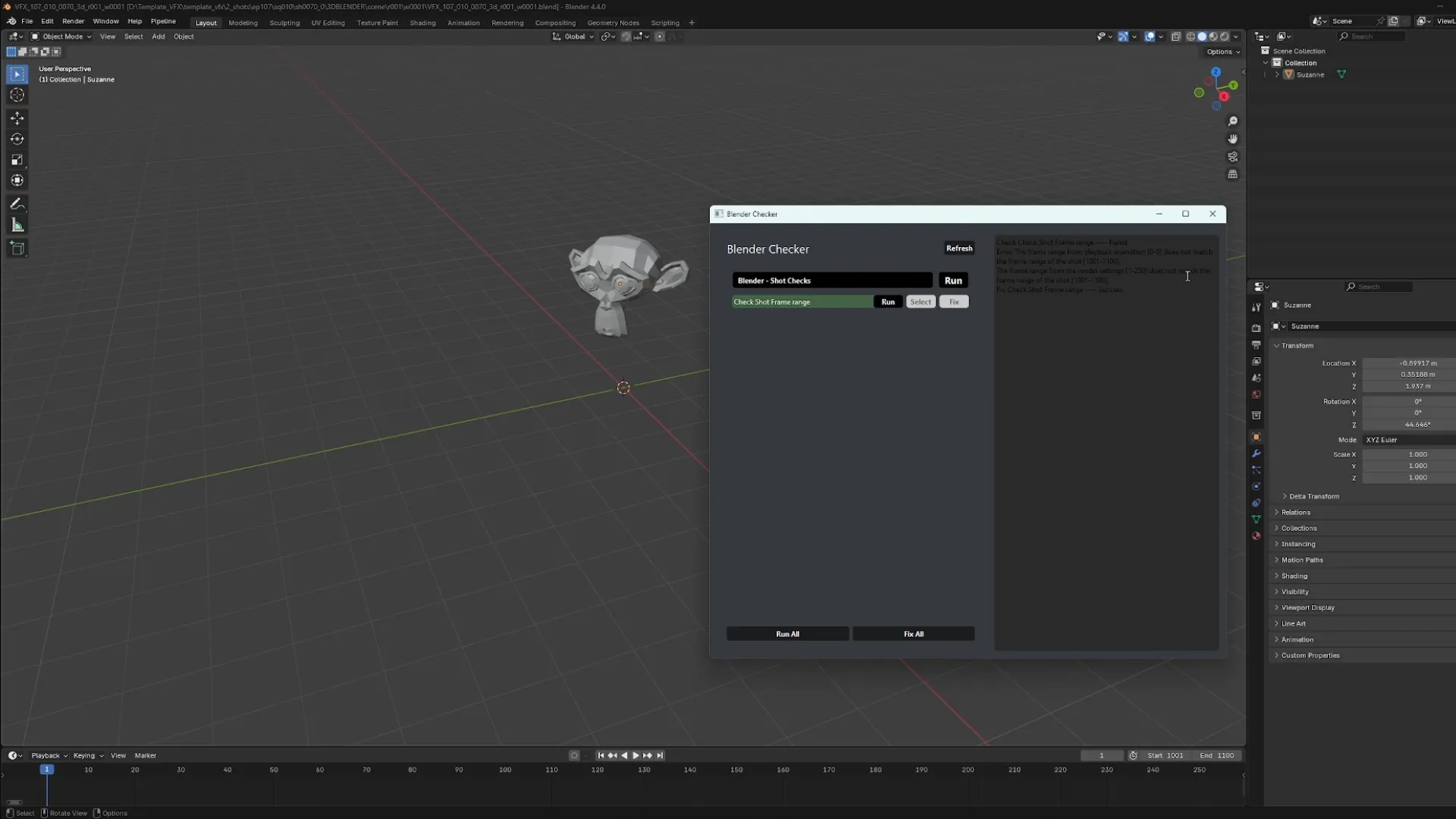
The panel now allows users to search by name or episode and displays each asset with a preview image, category, asset type, associated episode, and task.
The last task linked to the asset is selected by default, but users can easily change it before confirming. Once imported, the asset appears with all relevant preview and file data ready to use.
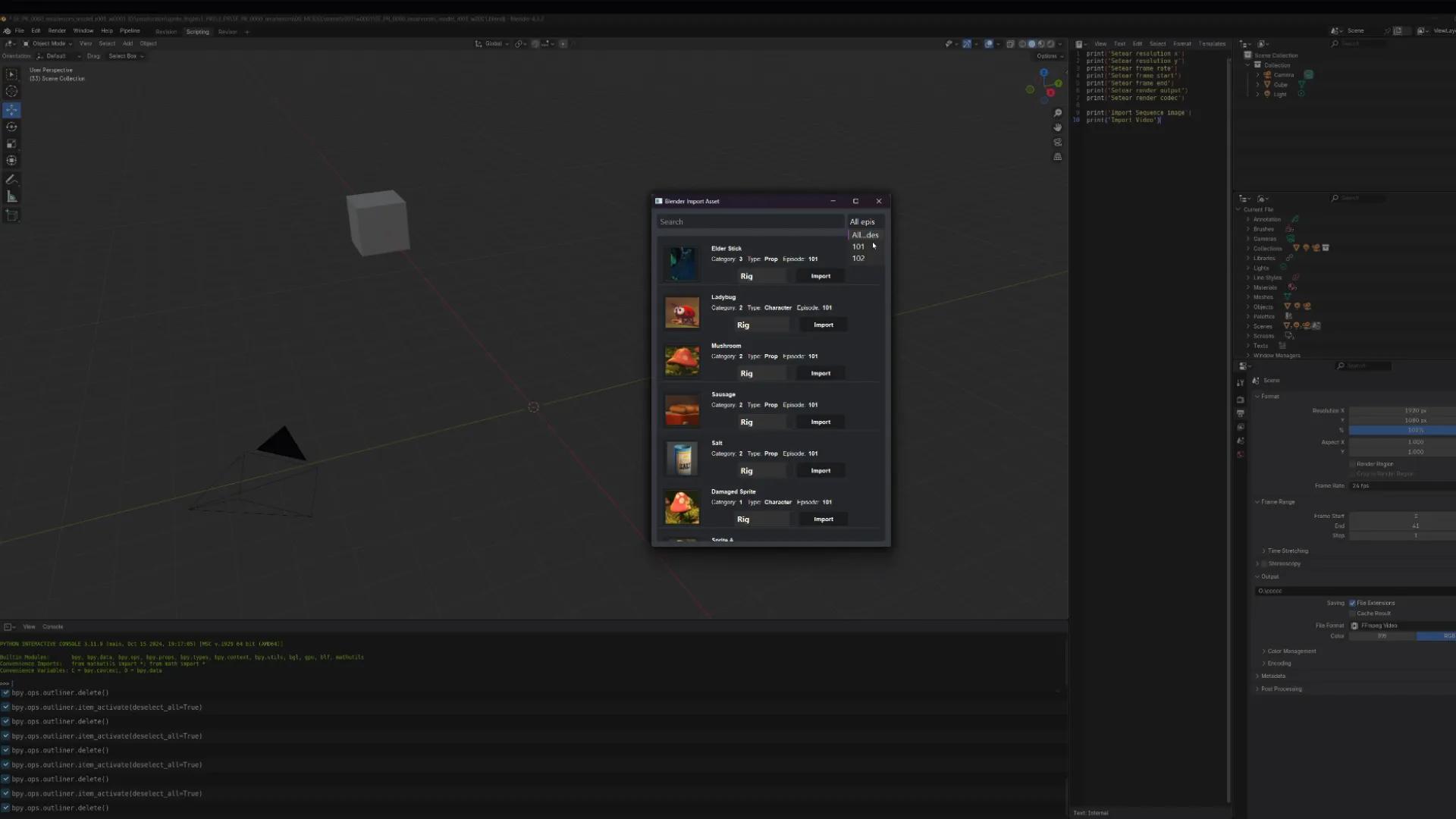
A new update improves the traceability of ingest-related tasks within Kraken. Tasks automatically generated during the ingest process for refedits and plates now use clear, descriptive names.
Refedit tasks are named “Refedit Ingest – [SHOT]”, while plate copy tasks are named “Plate Ingest – [SHOT] – [PLATE]”. This makes it much easier to visually identify what is being processed and to monitor the task status—whether it’s pending, in progress, or completed.
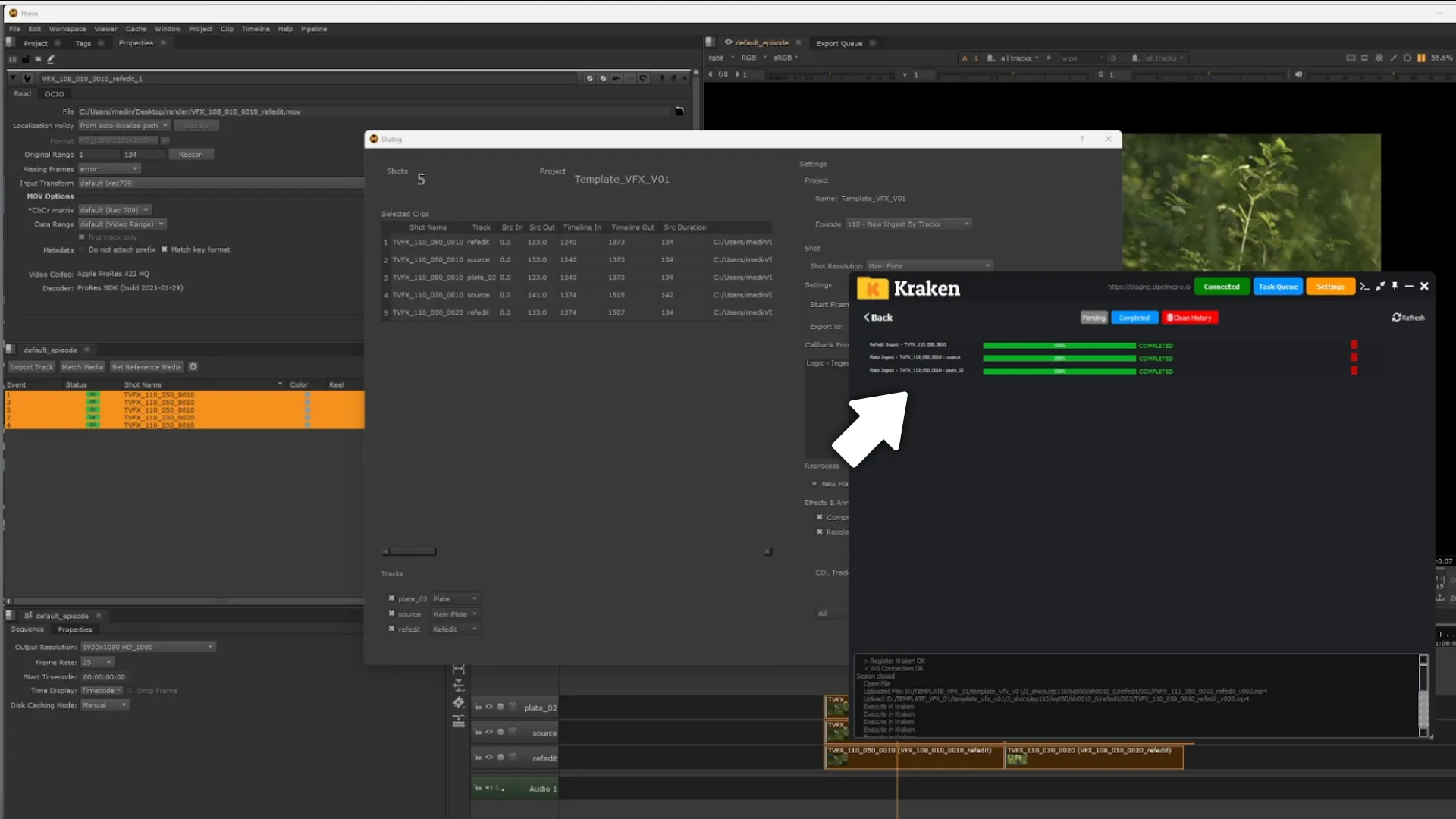
Clips no longer need to include the plate name—it's enough for the clip name to match the shot name. The system automatically assigns the role of each clip (refedit, main plate, or additional plate) based on the track's name. Only one track can be set as refedit and one as main plate per shot. When a new assignment is made, any previous assignment of the same type is automatically deactivated.
The panel now includes a resolution selector, allowing users to define whether the shot resolution should come from the main plate, the Hiero sequence, or the project’s technical specifications. Additionally, a color publishing fix ensures that the .mov files now reflect the correct color settings configured within Hiero.
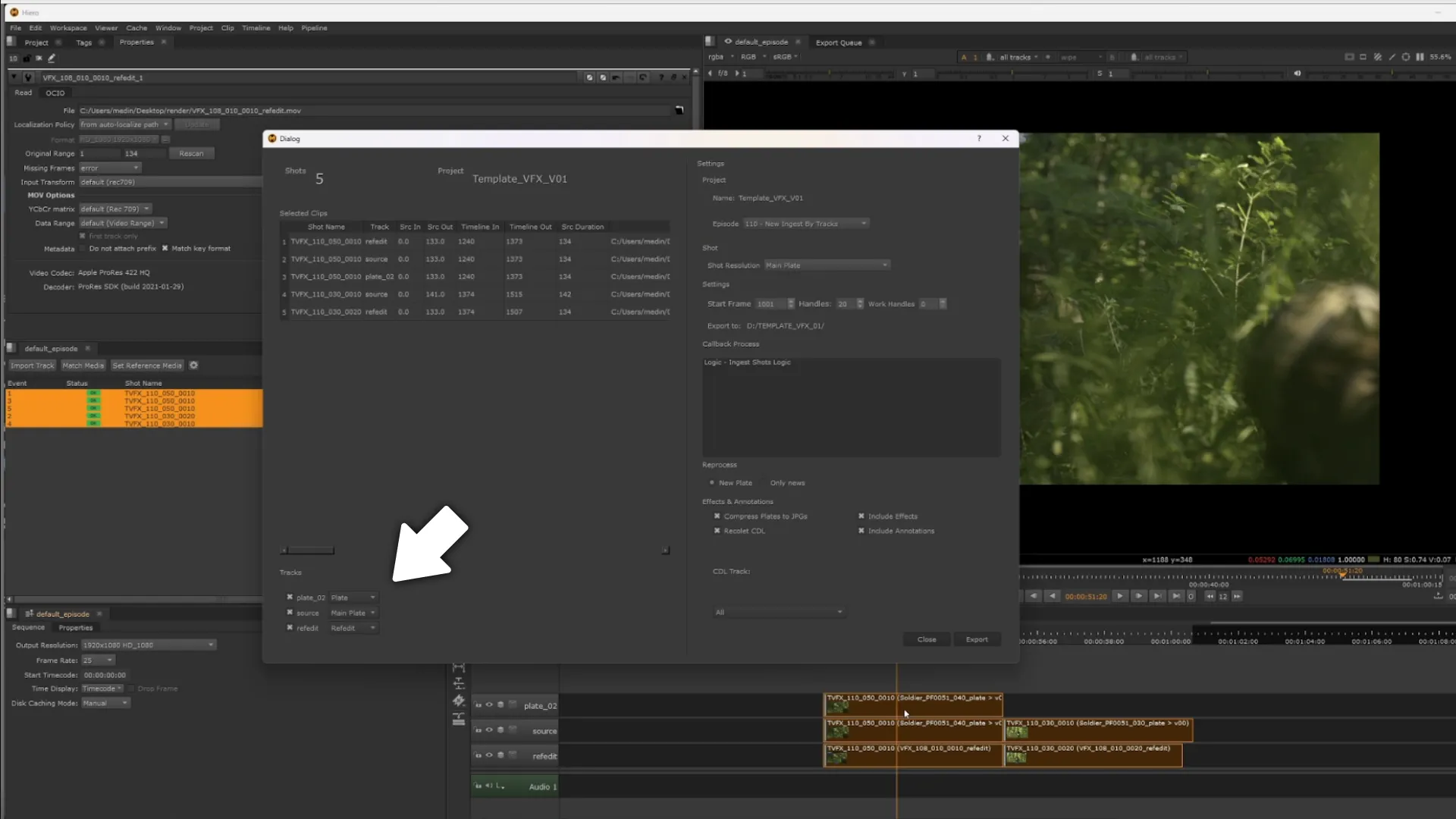
Users can open the panel, refresh checkers, run them individually or by group, and apply fixes when needed—all directly inside Blender. The panel remains functional even after closing and reopening the scene, confirming stable integration.
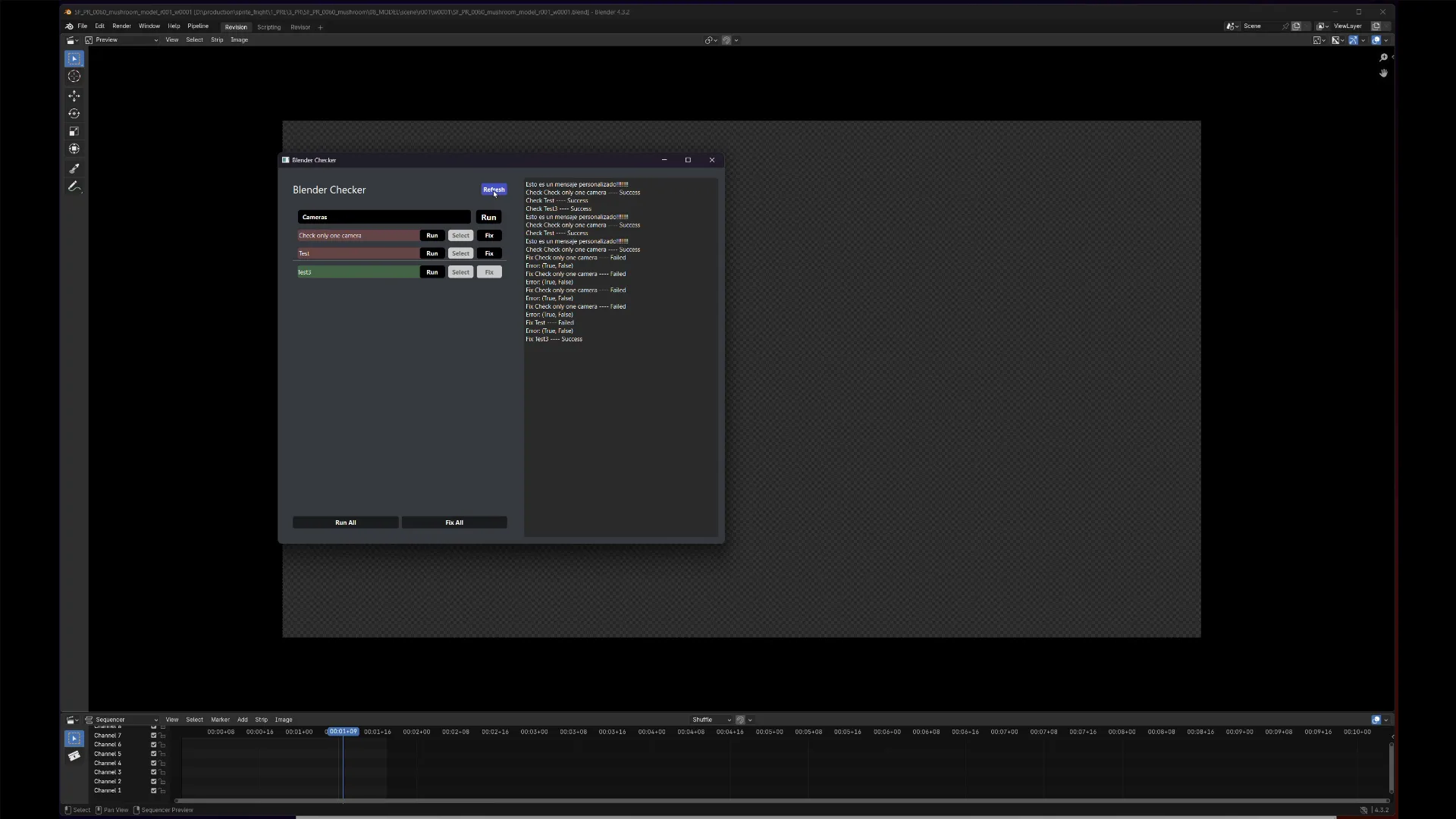
An issue in the shot creation panel has been fixed where new shots were always being added to the last available sequence, with no option to choose the destination. A new sequence selector has now been introduced, allowing users to define exactly where the shot should be created.
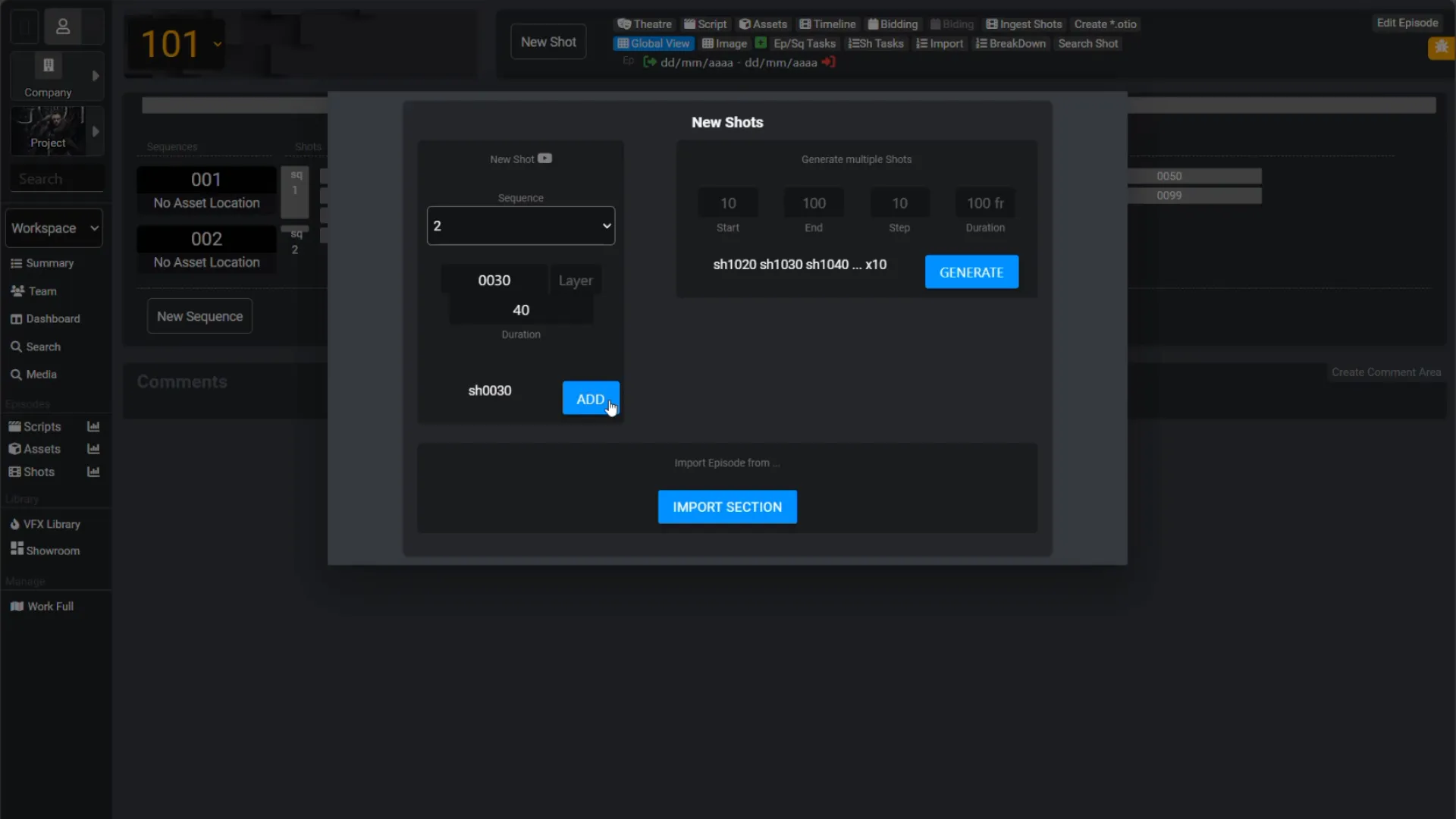
The ingest system has been upgraded to support track-based logic, removing the need to embed plate names into clip filenames manually. As long as the clip name matches the shot name, the ingest tool can now assign the correct role to each file based on its track name.
Tracks named refedit, plate source, or those containing the word main are automatically recognized and assigned as the reference or main plate. Only one of each is allowed, and any remaining clips are treated as additional plates. Users can manually override these assignments if needed.
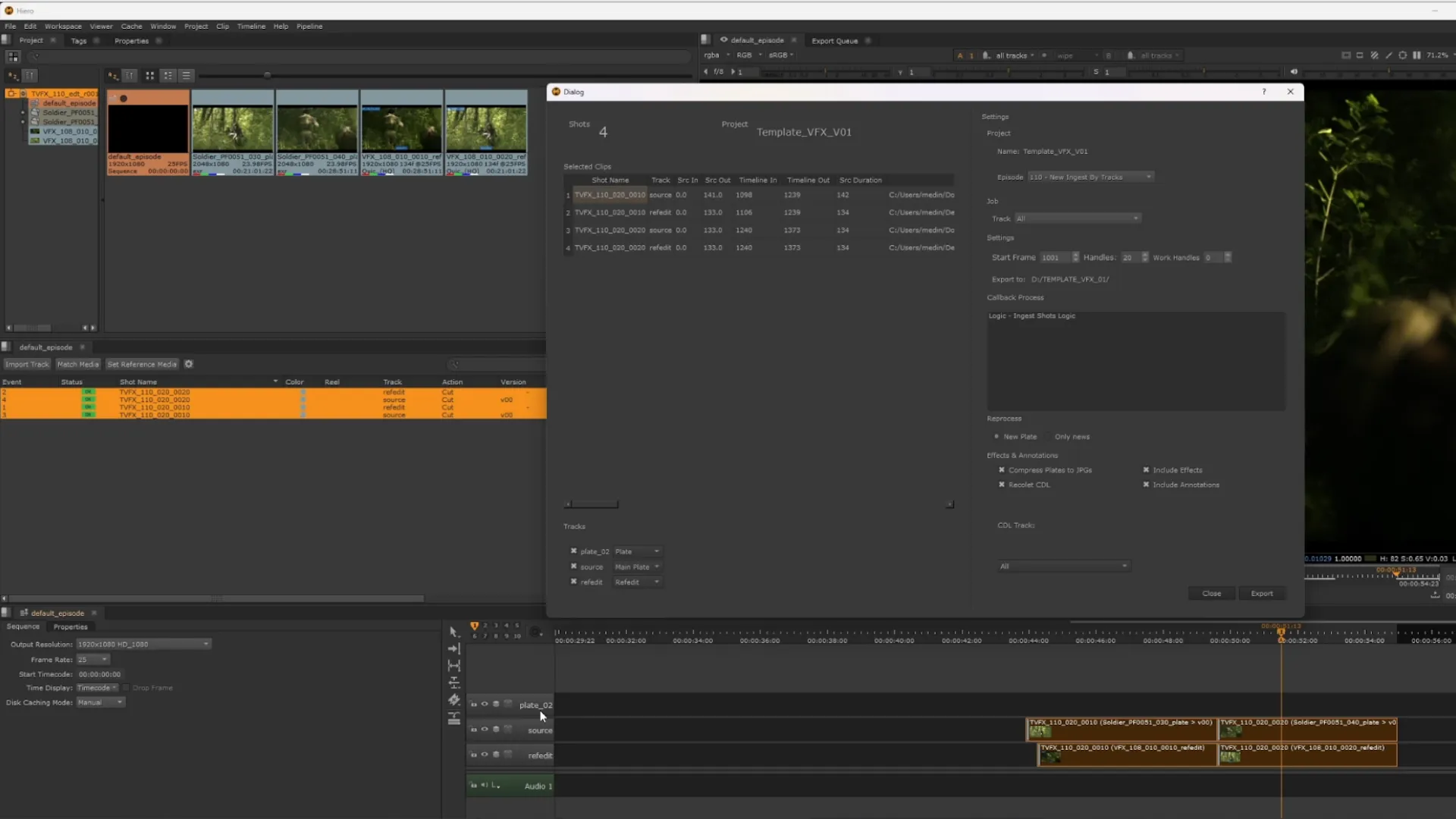
The system has been updated to improve error handling when accessing unavailable paths. Instead of showing a generic message, it now includes the specific path that could not be reached.
